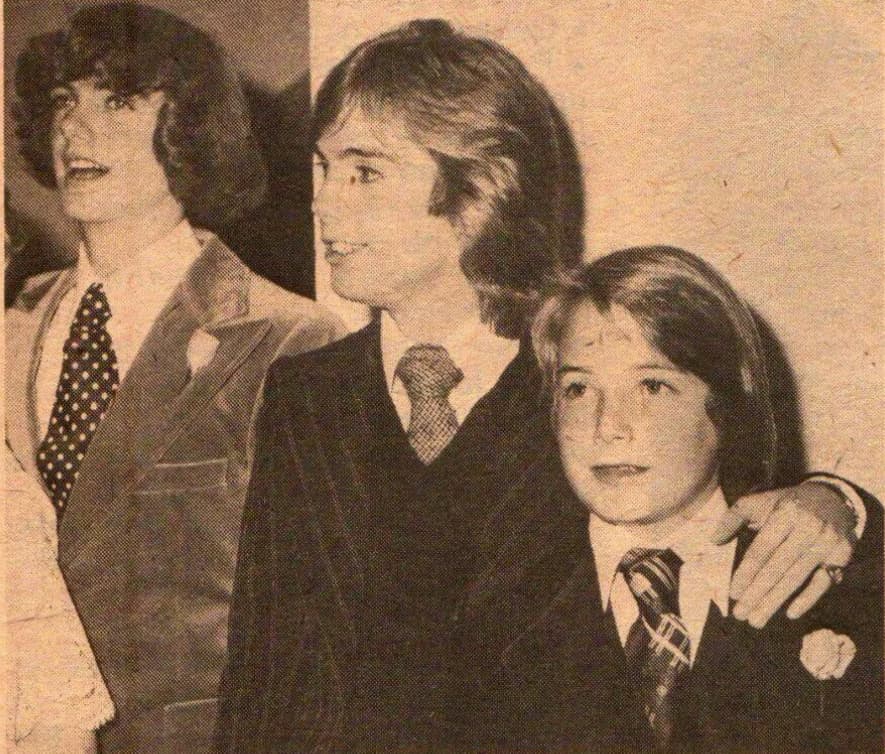
When Brothers Sing of Heartbreak: The Enduring Echoes of David and Shaun Cassidy’s “Tell Me It’s Not True”
In the sprawling tapestry of 1970s pop, few names shone as brightly as David Cassidy and his younger half-brother, Shaun Cassidy. They were the princes of teen idol-dom, their faces plastered on magazine covers, their voices the soundtrack to a generation’s first crushes. But beneath the bubblegum sheen and the screams of adoring fans lay a deeper, more poignant artistry. For those who grew up with them, who saw them not just as pin-ups but as emotional touchstones, their music was a mirror reflecting the tender vulnerabilities of youth. And perhaps no song captured that fragile intimacy more profoundly than “Tell Me It’s Not True.”
The year was 1979, and while the pop music landscape was shifting with the advent of punk and new wave, the ballad still held a powerful grip on the charts and the hearts of listeners. It was during this time that David Cassidy, already a seasoned superstar, embarked on a new project that would see him collaborate with his half-brother, Shaun, who by then had established his own successful music and acting career. The result was the album “Getting It in the Street,” a mature, reflective record that moved beyond the sugary pop of their earlier work. Tucked within this album was the collaboration that would resonate deeply with their fan base: “Tell Me It’s Not True.”
While it wasn’t a smash hit in the United States, its impact was felt most keenly in the UK, where David Cassidy’s star had never truly faded. The song was released as a single and, to the surprise of many, charted at a respectable No. 74 on the UK Singles Chart. It was a modest success by their standards, but its true legacy isn’t measured in chart positions. Instead, its power lies in its emotional weight and the story it told.
The story behind “Tell Me It’s Not True” is as deeply personal as the song itself. Penned by the talented songwriter Mike Bottler, the song was initially written with a different narrative in mind. However, when David and Shaun Cassidy took it on, they infused it with their own unique connection and, perhaps, the shared anxieties that come with loving someone so profoundly. The song’s lyrics tell a gut-wrenching tale of a son watching his mother succumb to illness. The opening lines, “I see you now, so pale and weak / There’s something in your eyes that I can’t speak,” set a somber, heart-wrenching tone. It’s a conversation with a loved one who is slipping away, a desperate plea to hold onto hope, even when all signs point to an inevitable, painful end.
For a generation that had grown up with David and Shaun as the embodiment of youthful exuberance, hearing them sing about such a profound loss was a jarring, yet deeply moving experience. The song wasn’t just a performance; it was a shared moment of grief and vulnerability. It evoked a sense of shared pain, connecting with anyone who had ever faced the impending loss of a family member. The lyrics, “Tell me it’s not true / The doctor’s diagnosis / Tell me it’s not you / That’s running out of time,” are simple, direct, and devastatingly effective. They capture the denial and the desperate hope that defines the human experience of grief.
In the years since its release, “Tell Me It’s Not True” has become a forgotten gem in the discographies of both David and Shaun Cassidy. It’s not the hit that defined their careers, but it remains a crucial piece of their musical legacy. For those of us who remember the 70s, this song isn’t just a tune; it’s a time capsule of an era when pop stars could also be artists who spoke to the deepest, most difficult parts of the human heart. It is a testament to the enduring power of music to console, to heal, and to remind us that even in the face of immense pain, we are never truly alone.